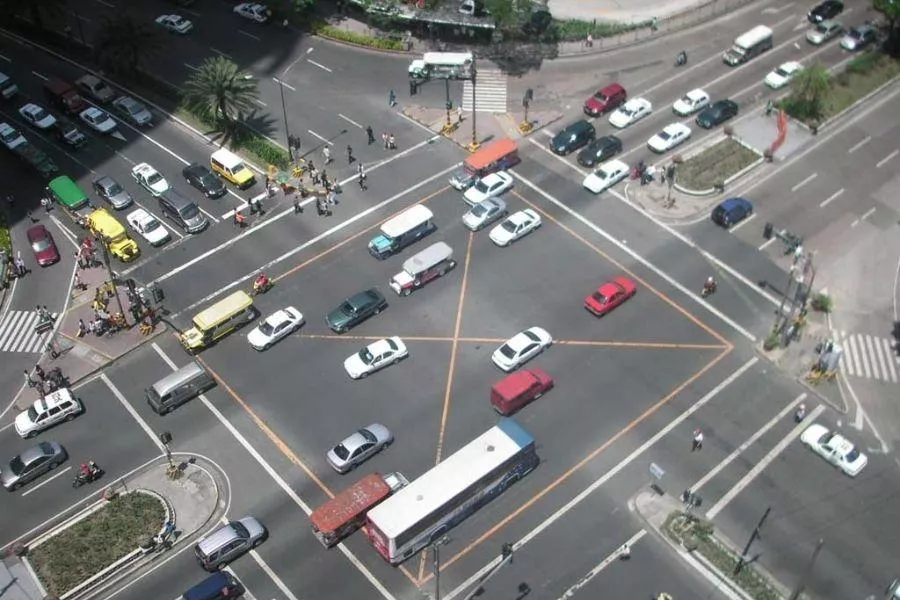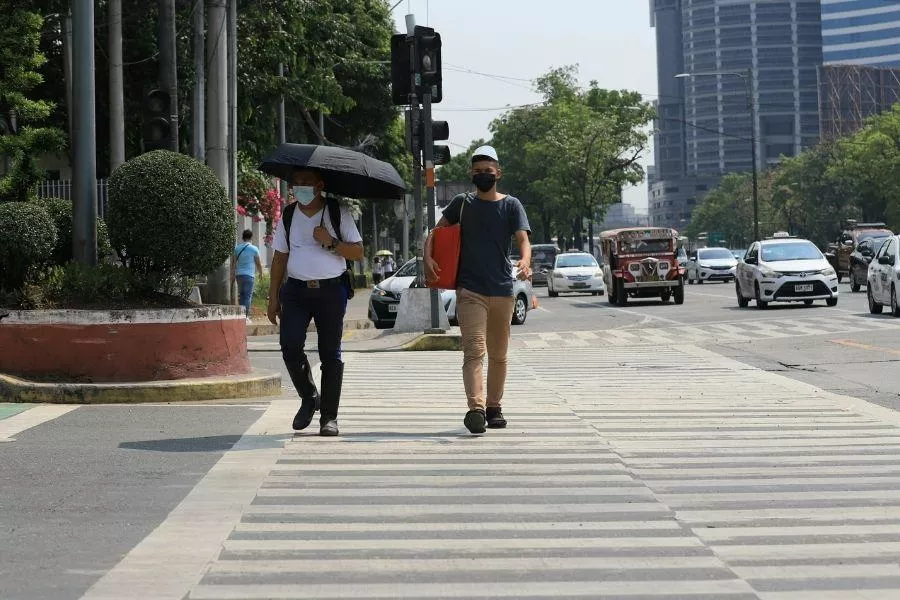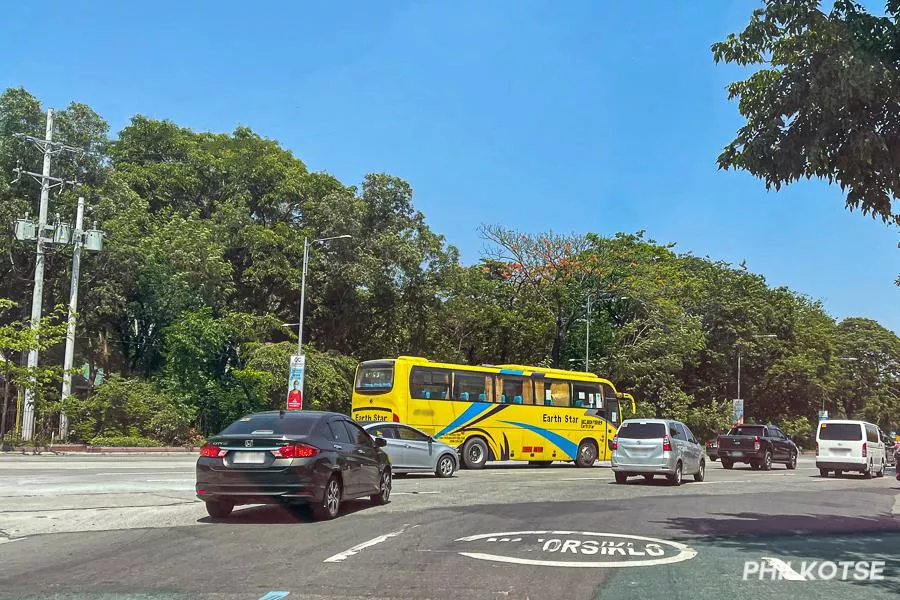In driving every day, it is inevitable that we will encounter traffic. And considering that traffic in most Philippine cities is messier than tangled wires, there will be some confusion. This is especially true in instances where two vehicles are approaching an intersection at the same time.

An intersection between Ayala Ave., and Makati Ave., [Photo source: Mike Gonzales (TheCoffee)]
To this end, the government has come up with rules pertaining to the “Right of Way.” This was put into law under the Land Transportation and Traffic Code – Right of Way and Signals, specifically under Article III Section 42 to 44 of the Republic Act No. 4136.
Unfortunately, though, it seems that some drivers are unfamiliar with the many rules surrounding the right of way. So strap in, as we’ll explain what right of way is in an easy-to-digest, legalese-free guide.
Right of way Act Philippines: The Basics
Basically, the right of way pertains to the road users who have the right to go first in a particular situation or place.
This is applicable to intersections, roundabouts, railway junctions, pedestrian lanes, and many other road features where cars can enter them at the same instance. This of course not only applies to motor vehicle traffic, but also to pedestrians and even trains.
The following are the right of way rules in the Philippines that a driver has to keep in mind.
Right of way rules in the Philippines: Intersections
Ideally, intersections should have traffic lights for drivers to know when to stop, go, and slow down. Unfortunately, there are some intersections without these devices. On some days, these are manned by traffic enforcers. But what do you do when they aren’t?
In these instances, a driver approaching an intersection but has not entered it yet must yield to a vehicle that has already entered or begun turning into the said intersection. If you arrived at the same time as another motorist, then the car to your right will have the right of way.

It is common to encounter and/or commit right of way mistakes. But apologizing for it is rarer still
Moreover, cars that are turning left across lanes should be allowed to go first, provided that they are signaling their intention to make the said turn. Lastly, a car traveling far beyond the speed limit will no longer have the right of way.
Furthermore, cars traveling on a small road leading to an intersection linking to the main road should always yield to traffic already traveling on the said main road. Then again, do note that a driver on the main road should always be alert whenever approaching an intersection regardless of having the right of way.
![A railway crossing in the Philippines. Note the signs to the right [Photo Source: Railway] A picture of a railway crossing in the Philippines](https://img.philkotse.com/temp/2024/07/27/railwaycrossing-064e-wm-2669.webp)
A railway crossing in the Philippines. Note the signs to the right [Photo Source: RailWay]
And lastly, a driver should always stop at intersections with stop signs regardless of it appearing clear of traffic. Wait for a few seconds and confirm if it’s really safe and clear, turn on your signal lights, then proceed. These signs after all are there for a purpose and it's better to follow them than be sorry.
Do note also that most railroad crossings are also marked with stop signs. And yes, it is only common sense for a driver to make sure that the said crossing is safe and clear of any oncoming or passing trains.
Right of way rules in the Philippines: Emergency vehicles
This should already be obvious by now, yet we’re including this since there are still some drivers who fail to recognize the importance of giving way to emergency vehicles such as ambulances, police cars, and fire trucks.

Philippine emergency vehicles are hard not to spot when their sirens and lights are on
So when a driver hears or sees an emergency vehicle’s sirens and/or lights, he/she should immediately but carefully pull the vehicle towards the side of the road. One should then remain stopped until the emergency vehicle has passed.
Right of way rules in the Philippines: Parking lots or driveways
It’s pretty common to find establishments with outside parking lots and home driveways adjacent to a public road.
So when driving out of such places, take note that cars passing on the road are the ones with the right of way. On the part of the driver pulling out from the parking spot, he/she needs to wait until the road is clear of traffic or when the next car is still far away.
Right of way rules in the Philippines: Pedestrian crossings
Obviously, a driver should always give the right of way to pedestrian crosswalks. That is unless a traffic enforcer of traffic signal light is actively managing the movement of pedestrians. A driver should also avoid cutting off pedestrians who are in the midst of a crosswalk.

That said, what kind of a-hole cuts off a pedestrian?
Then again, jaywalking is also a problem in the local setting. But yeah, it's just safer for a driver and the law-breaking pedestrian if you just let them pass.
Right of way rules in the Philippines: Roundabouts or “rotundas”
For newbie drivers’ roundabouts in the Philippine setting is chaos. Many other drivers after all are unaware or do not care about the right of way protocols on rotundas. This results in constant crisscrossing traffic and an endless cycle of being cut-off and cutting off.
So, to clear things up about right of way on rotundas, the Land Transportation Office (LTO) states that cars that are already in the rotunda will always have right of way. To this end, cars that are yet to enter the rotunda should yield to cars going out or are traveling within the rotunda.

The Quezon City Memorial Circle Elliptical road. One of the largest rotundas in NCR
Those are the right of way rules on Philippine roads. Now obviously, these won’t save you from other drivers who are unaware of these rules. As such, we urge you to be alert, be observant, and always use your turn signal lights.
As a side note, it also pays to be patient even if you’re robbed of your right of way. Sure, many of us will feel the need to assert our rights as drivers, but that might not work in some instances. Again, extra patience goes a long way especially with how our roads are.
For more safe driving tips, keep reading here on Philkotse.com.
Recent posts
- Complete list of LTO fines and penalties in the Philippines Aug 17, 2022
- Reckless Driving in the Philippines: All about its consequences, penalty & more Aug 25, 2021
- Road Safety Tips for Cyclists and Drivers: All you must know Aug 16, 2022
- A complete guide to safe driving in the Philippines Feb 11, 2019
- A Deeper Understanding of the Different Road Signs in the Philippines Apr 24, 2020












